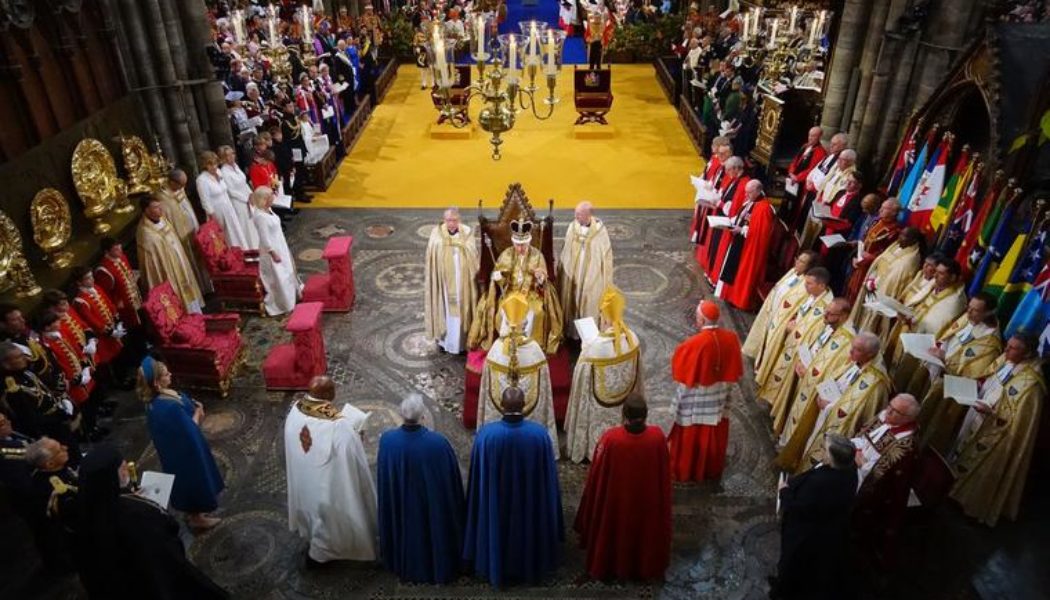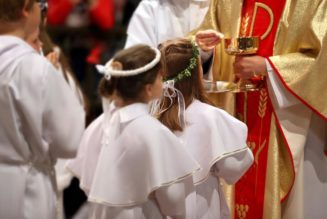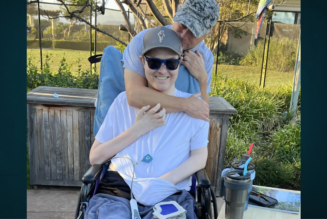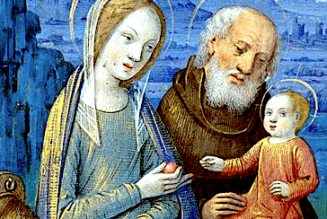
COMMENTARY: The coronation of King Charles consecrated him symbolically as a priest-king like Solomon.
God save the King! Long live the King!
So the cries went up in Westminster Abbey at the coronation of King Charles III. Catholics watching may have been reminded of a frequent acclamation in the presence of the Holy Father: Viva il Papa! Long live the Pope!
There was a time, during the time when the pope ruled over the Papal States as a temporal sovereign, that the cries were sometimes different: Viva il Papa Re! Long live the Pope King!
And at the coronation, it would have been a fitting time to cry out, God save the King Bishop! Long live the Bishop King!
On Saturday, after months of talking about the coronation, the coronation spoke at last. It spoke as all good liturgy speaks. The late Rabbi Abraham Joshua Heschel reminded us that the point of liturgical worship is not that it should say what we mean, but that we should mean what it says.
The coronation spoke poetically and powerfully. It sang gloriously, soaring in spirit, offering supplications to God for the King — and, one might say, symbolically a bishop.
The coronation rite is properly Anglican, but with deep Catholic roots, and even today resembles nothing as much as the ordination of a bishop. Few Catholics may have witnessed the consecration (“coronation”) of a bishop, but those that have would have recognized the key elements at Westminster Abbey.
Indeed, the anointing and crowning of a king is rooted in a “royal priesthood,” with the biblical exemplar of the anointing of King Solomon, who both ruled and offered priestly worship.
The ritual is a priestly one. The Gospel proclaimed is Luke 4 — “The spirit of the Lord is upon me” — which is read at the chrism Mass during Holy Week, the Mass at which Catholic priests renew the promises of ordination.
Before the anointing of the King, the Veni Creator Spiritus is sung, as is often done at ordinations.
King Charles knelt, analogous to the prostration of men before they are ordained deacons, priests or bishops.
At the heart of the coronation ceremony is the anointing of the king — his hands, breast and head. Catholics are anointed with holy oil on the breast at baptism; a priest’s hands are anointed at ordination; and the head of a bishop is anointed when he is consecrated.
Before the anointing, King Charles was stripped of his “robes of state” — the garments of his civic authority. After his anointing, he was dressed — vested, more accurately — not in the robes of state, but as a priest.
The vestments were described as the colobium sindonis, supertunica, and girdle. We know them as the alb, a dalmatic or tunicle worn by deacons and sub-deacons, and the cincture.
Then the king put on the “Royal Stole” and the “Royal Robe,” which is really a cope — the same vestment the archbishop of Canterbury was wearing.
Thus vested as a priest, he was presented the “regalia” — spurs, swords, bracelets, ring, scepter, rod, orb — just as a newly ordained bishop is presented a ring and a pastoral staff.
Finally, Charles received his crown, just a bishop receives his miter. He did so dressed not in military or royal dress, but in the vestments of a high priest.
During the king’s anointing is sung the soaring Handel anthem: “Zadok the priest and Nathan the prophet anointed Solomon king!” Solomon, as king, dedicated the Temple and led the sacrifices there — a great priestly act. The coronation of King Charles consecrated him symbolically as a priest-king like Solomon.
Kings David and Solomon echo the priest-king who appears in Genesis, Melchizedek. It is common at priestly ordinations for a setting of Psalm 110 to be sung: Tu es sacerdos in aeternum secundum ordinem Melchisedech — “You are priest forever according to the order of Melchizedek.”
Why the insistence that Christian kingship include a priestly dimension, as well? The mission of the king is to serve the good of his people, and their greatest good is to know God in his word, encounter him in prayer and worship him rightly. A king ought to see to that.
The coronation rituals are singular. King Charles will never again bear St. Edward’s Crown with which he was crowned. He will never again sit in his “cathedra,” the Coronation Chair. He will never again wear his alb, stole and cope, ready for ministry at the altar. Yet that he does all that at the most solemn moment of his reign is deeply instructive. A good king cannot limit himself only to worldly affairs. A Christian king is to be modeled on Christ the King, who was also the great High Priest.
Viva il Papa Re! was something of a temporal accretion to the ministry of Peter, not essential to it. The priestly role of the king is essential to the self-understanding of the British crown, a mission that transcends the merely temporal. God save the King!









